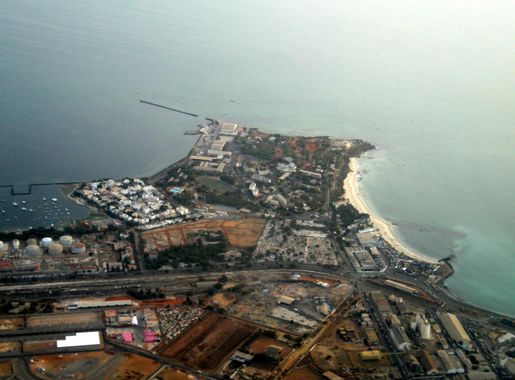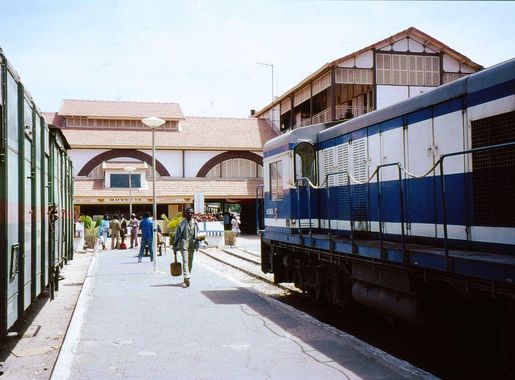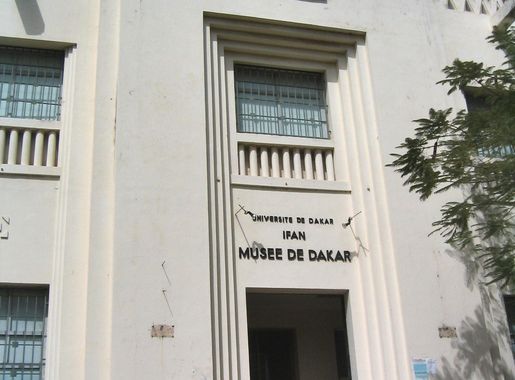
Hann Bel-Air: Coastal Charm and Cultural Richness in Dakar
Discover Hann Bel-Air in Dakar: A coastal gem teeming with natural beauty, cultural richness, and unforgettable experiences for every traveler.
Hann Bel-Air in Dakar is a vibrant coastal neighbourhood that captures the essence of Senegalese life. Located along the serene shores of the Atlantic Ocean, this area offers a unique blend of natural beauty and cultural experiences that will leave you enchanted. One of the main attractions in Hann Bel-Air is the Hann Park, a verdant oasis perfect for leisurely strolls and picnics. The park also houses a zoo, making it a great spot for families. For those interested in marine life, the nearby Hann Bay provides opportunities for boating and fishing, offering a peaceful escape from the bustling city. The neighbourhood is also a cultural hotspot, with local markets brimming with colourful textiles, handcrafted goods, and delicious street food. The friendly locals are always ready to share stories about their heritage, making every interaction a memorable experience. Don't miss out on the chance to experience traditional Senegalese music and dance performances, which frequently take place in the area. Hann Bel-Air's strategic location makes it easy to explore other parts of Dakar. Whether you're interested in history, culture, or simply soaking up the sun, this neighbourhood offers a little something for everyone.
Local tips in Hann Bel-Air
- Visit Hann Park early in the morning to avoid the heat and enjoy a peaceful atmosphere.
- Bring cash for local markets as many vendors do not accept credit cards.
- Wear comfortable shoes as you'll likely be walking a lot to explore the area.
- Try the local street food but make sure to choose stalls that are busy with locals for the best experience.
- Learn a few basic phrases in French or Wolof to enhance your interactions with locals.
Hann Bel-Air: Coastal Charm and Cultural Richness in Dakar
Hann Bel-Air in Dakar is a vibrant coastal neighbourhood that captures the essence of Senegalese life. Located along the serene shores of the Atlantic Ocean, this area offers a unique blend of natural beauty and cultural experiences that will leave you enchanted. One of the main attractions in Hann Bel-Air is the Hann Park, a verdant oasis perfect for leisurely strolls and picnics. The park also houses a zoo, making it a great spot for families. For those interested in marine life, the nearby Hann Bay provides opportunities for boating and fishing, offering a peaceful escape from the bustling city. The neighbourhood is also a cultural hotspot, with local markets brimming with colourful textiles, handcrafted goods, and delicious street food. The friendly locals are always ready to share stories about their heritage, making every interaction a memorable experience. Don't miss out on the chance to experience traditional Senegalese music and dance performances, which frequently take place in the area. Hann Bel-Air's strategic location makes it easy to explore other parts of Dakar. Whether you're interested in history, culture, or simply soaking up the sun, this neighbourhood offers a little something for everyone.
Iconic landmarks you can’t miss
African Renaissance Monument
Discover the African Renaissance Monument: a towering symbol of hope, culture, and beauty in Dakar, Senegal, offering breathtaking views and rich history.
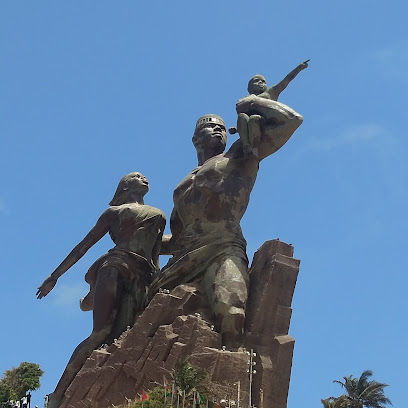
Hann Zoological Park
Explore diverse wildlife and lush landscapes at Hann Zoological Park, a top tourist attraction in Dakar, perfect for families and nature lovers.
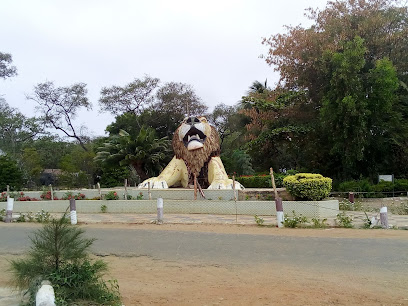
Monument du Millénaire
Explore the Monument du Millénaire, a beautiful historical landmark in Dakar representing Senegal's rich cultural heritage and national pride.
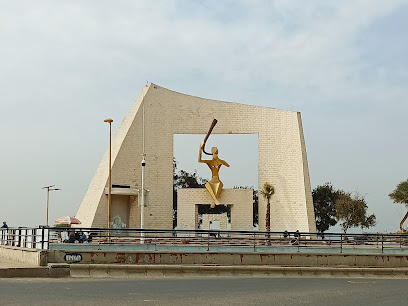
Parc Forestier de Hann
Experience the serene beauty of Parc Forestier de Hann, Dakar's lush national park filled with diverse flora and fauna, perfect for nature lovers and families.
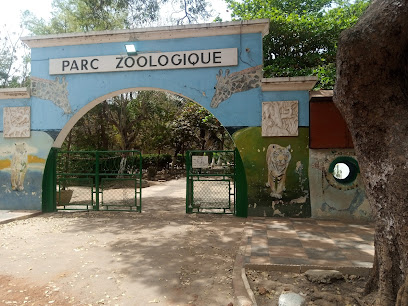
Cimetière Bel-Air
Discover the tranquil beauty and rich cultural heritage of Cimetiere Bel-Air, a serene cemetery and historical site in the heart of Dakar.
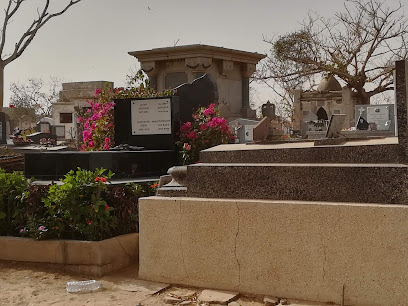
Cimetier Muslim Hann-Bel Air
Explore the peaceful Cimetier Muslim Hann-Bel Air, a historical cemetery in Dakar, showcasing rich artistry and cultural significance.
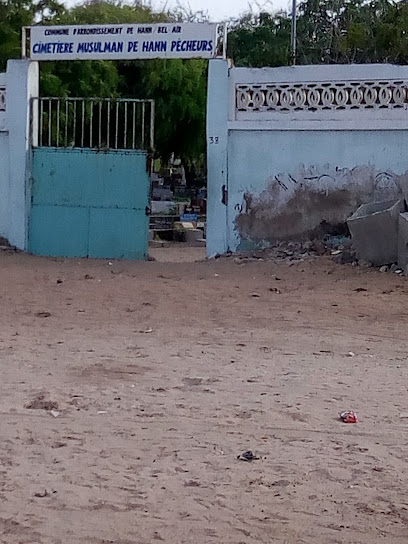
Vieux diaw
Discover the vibrant essence of Dakar at Vieux Diaw, a hidden gem showcasing local culture and traditions in the heart of Senegal.
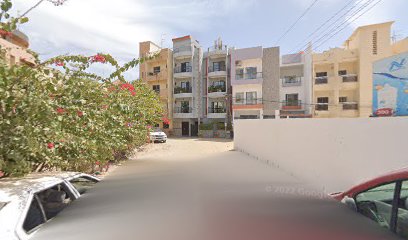
Bel air Hann
Discover the serene beauty and cultural significance of Bel Air Hann, a tranquil place of worship in vibrant Dakar, Senegal.
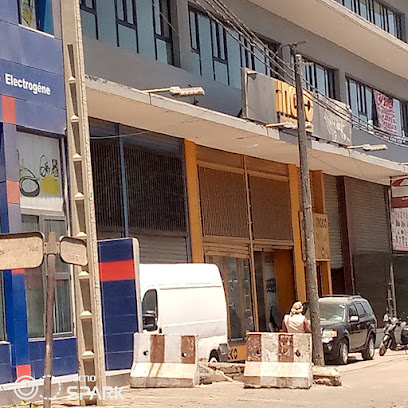
Dakar
Experience the vibrant culture, rich history, and dynamic atmosphere of Dakar, Senegal's bustling capital, where tradition meets modernity.
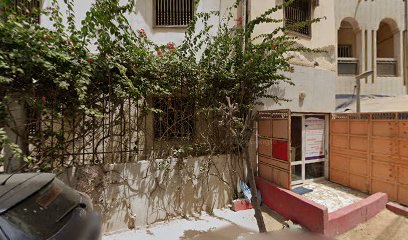
dakar
Explore Dakar, a vibrant city where historical landmarks, stunning coastal views, and rich culture come together to create an unforgettable travel experience.
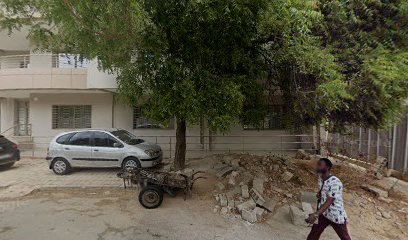
Mur des legendes
Explore the Mur des Légendes in Dakar, a vibrant mural that captures the essence of Senegal's rich cultural heritage and legendary figures.
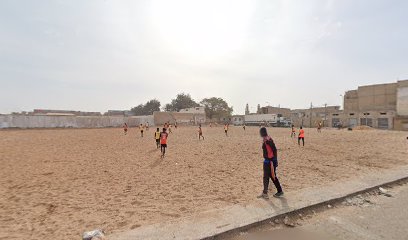
Unmissable attractions to see
African Renaissance Monument
Explore the African Renaissance Monument in Dakar, a stunning symbol of freedom and unity, offering breathtaking views and rich cultural experiences.
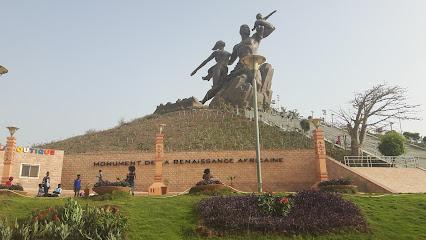
Place du Souvenir Africain
Explore the rich history and vibrant culture of Senegal at Place du Souvenir Africain, a breathtaking tribute to African heritage in Dakar.
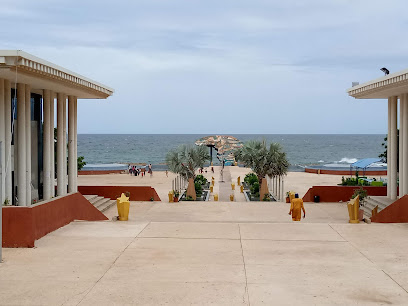
Magic Land
Experience the thrill and excitement of Magic Land, Dakar's premier amusement park offering fun rides, games, and entertainment for all ages.
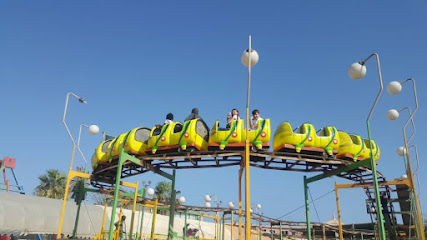
Essential places to dine
LE TANDEM Restaurant - Lounge - Take Away Food - Dakar
Discover the vibrant flavors and relaxing atmosphere at LE TANDEM Restaurant - your go-to dining experience in Dakar.
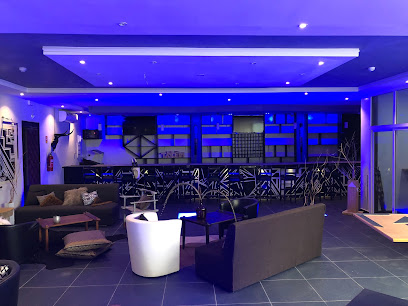
Restaurant Le Carré Dakar
Experience the vibrant culinary scene at Restaurant Le Carré in Dakar - where local flavors meet contemporary dining.
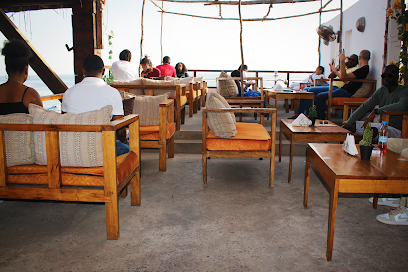
MAWA'S American Garden Restaurant
Experience authentic American cuisine amidst lush gardens at MAWA'S American Garden Restaurant in Dakar's Hann Bel-Air.
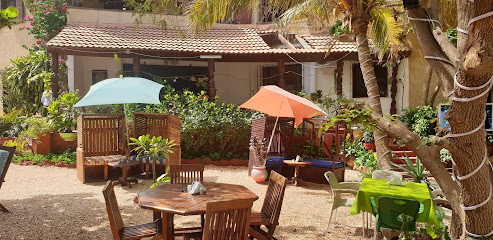
The Spot Restaurant/Grill
Experience authentic Senegalese flavors at The Spot Restaurant/Grill in Dakar – where culinary delight meets vibrant culture.
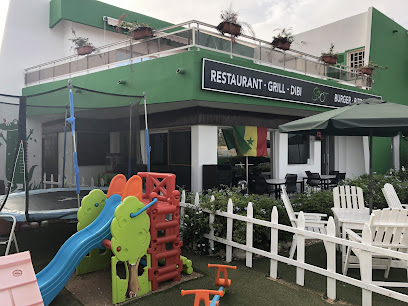
La corvette, Hann Bel Air
Discover authentic Senegalese cuisine at La Corvette in Hann Bel Air, where every dish tells a story of rich culinary traditions.
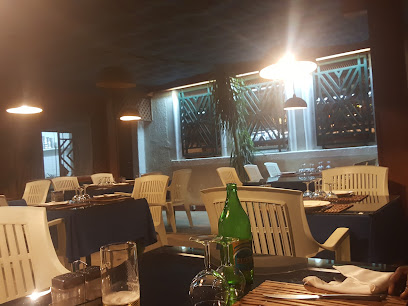
Restaurant Fast-Food Chez Gasse
Experience the vibrant flavors of Senegal at Restaurant Fast-Food Chez Gasse in Dakar – where quick bites meet local delights.
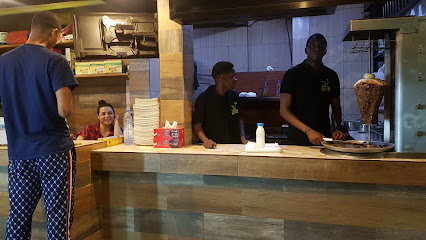
La Corne d’Or Dakar
Discover authentic Senegalese cuisine at La Corne d’Or Dakar, where every dish tells a story amidst breathtaking ocean views.
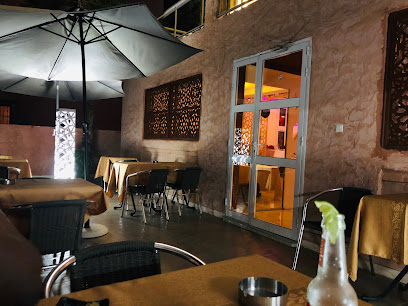
Maison B
Experience the rich flavors of Africa at Maison B in Dakar – a must-visit restaurant for tourists seeking authentic cuisine.
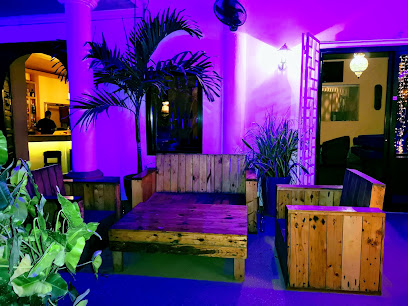
NOMAD Restaurant Maristes
Discover the essence of Senegalese cuisine at NOMAD Restaurant Maristes - where tradition meets innovation in every dish.
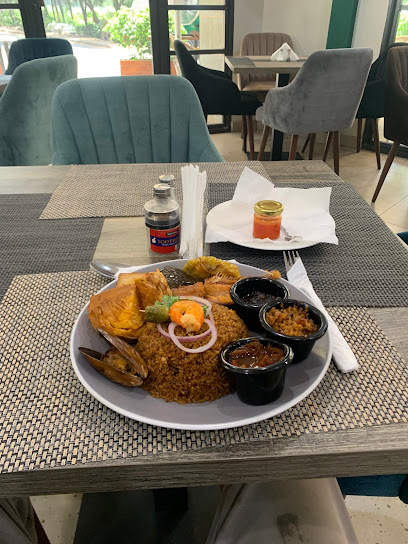
Le Pelican Restaurant
Experience authentic Senegalese cuisine at Le Pelican Restaurant in Dakar – where every dish tells a story.
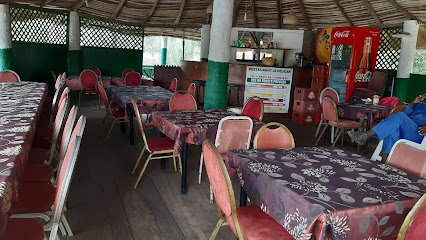
Markets, malls and hidden boutiques
American Super Store
Experience the vibrant culture of Senegal through shopping at the American Super Store, where local and international products meet.
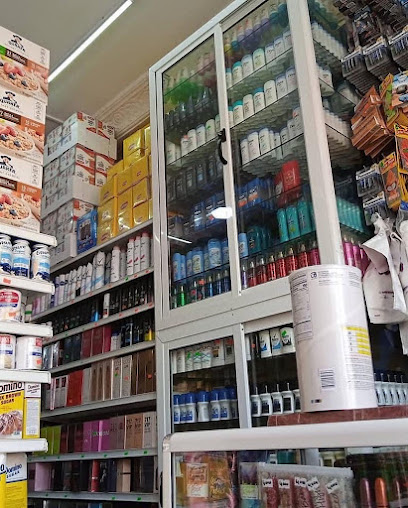
Prix D'usine boutique
Dive into Dakar's vibrant fashion scene at Prix D'usine Boutique, where style meets local flair in a unique shopping experience.
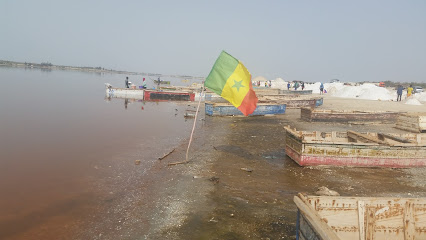
La boutique secréte
Explore La Boutique Secrète in Dakar for unique local crafts, fashion, and gourmet delights, capturing the essence of Senegalese culture.

Shop
Explore Dakar's vibrant shopping scene, where local crafts, unique fashion, and rich culture await every visitor.
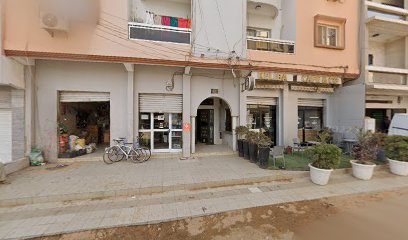
AB-E Showroom
Discover the essence of Senegalese craftsmanship at the AB-E Showroom, a boutique showcasing unique fashion and artisanal goods in Dakar.
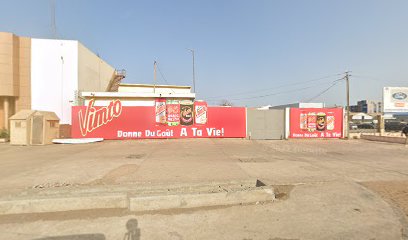
DIOP BUSINESS TRADING
Discover the charm of Dakar at DIOP BUSINESS TRADING, a boutique showcasing local fashion and artisanal crafts for an unforgettable shopping experience.

Diamond shop
Discover the allure of exquisite diamonds at the Diamond Shop in Dakar, where luxury meets rich Senegalese craftsmanship.
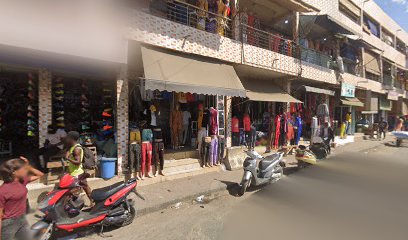
ZADI GIFT HOUSE
Explore Zadi Gift House – a treasure trove of authentic Senegalese gifts and crafts in the heart of Dakar.
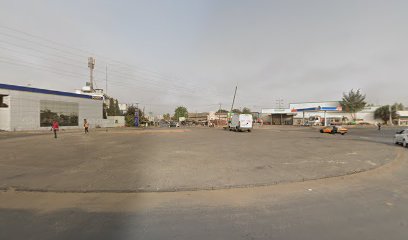
La Petite Attention SN
Explore the vibrant culture of Senegal at La Petite Attention SN, a unique gift shop offering handcrafted treasures and local artistry.

Drame shop
Explore Drame Shop in Dakar for a vibrant mix of traditional and modern Senegalese fashion that captures the essence of local culture.
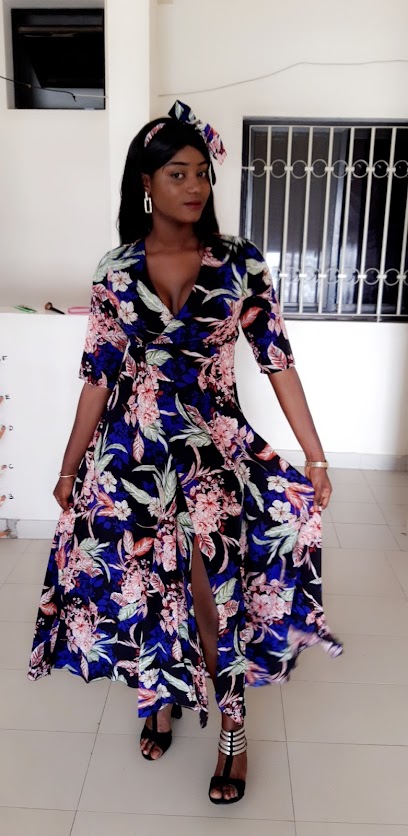
Essential bars & hidden hideouts
Viking Pub
Discover the lively spirit of Dakar at Viking Pub, where local culture meets international flair in a vibrant bar atmosphere.
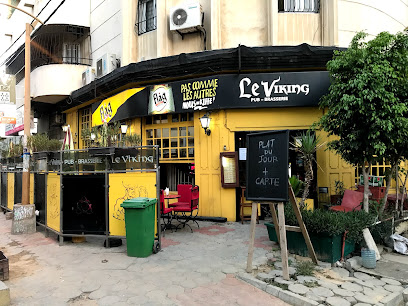
La corvette, Hann Bel Air
Discover authentic Senegalese cuisine at La Corvette in Hann Bel Air, a vibrant restaurant offering a taste of local culture and flavors.
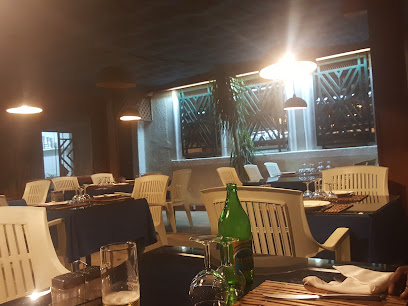
Bar Le Bois De Boulogne
Discover the vibrant nightlife at Bar Le Bois De Boulogne in Dakar, where locals and tourists come together for a refreshing drink and lively atmosphere.
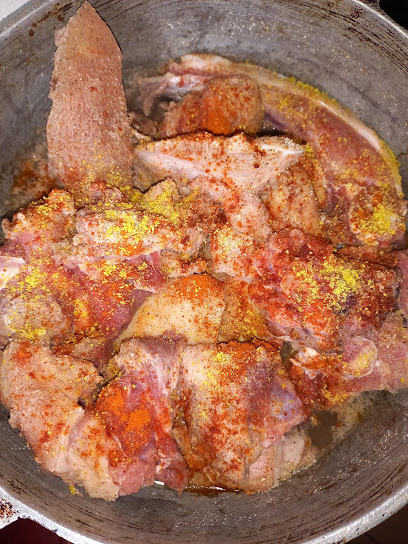
Casa Bar
Discover the vibrant nightlife at Casa Bar in Dakar, where cocktails, music, and community come together for an unforgettable experience.
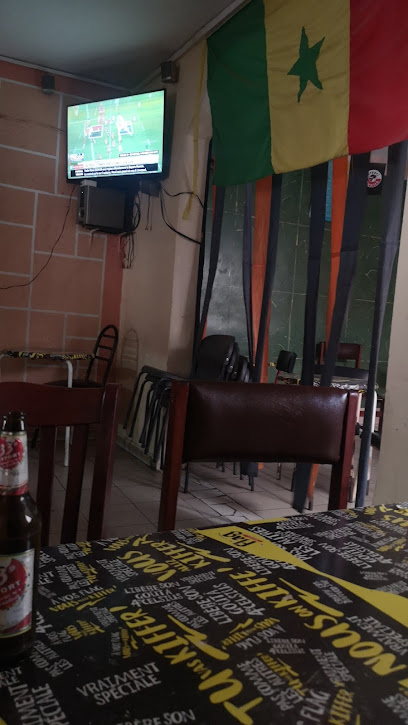
Bar chez mame paul
Experience the vibrant nightlife of Dakar at Bar chez mame paul, where friendly vibes and a great drink selection await.

Chez Nguiléne
Experience the vibrant nightlife of Dakar at Chez Nguiléne, a lively bar offering local drinks and an inviting atmosphere.
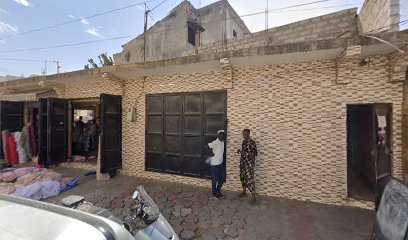
Maristes 2
Discover the vibrant nightlife at Maristes 2, a lively girl bar in Dakar, perfect for drinks, music, and mingling with locals and tourists alike.
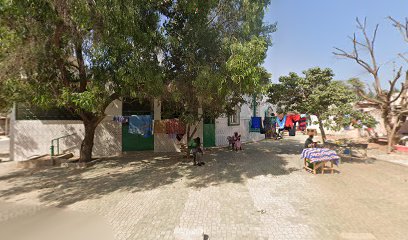
Ici mariste
Discover Ici Mariste, a vibrant bar in Dakar, where local culture and nightlife come alive with refreshing drinks and a lively atmosphere.
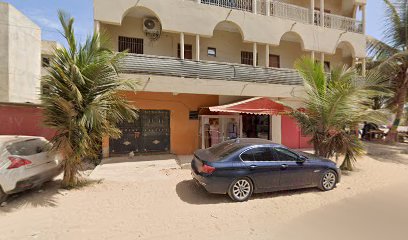
L'impasse
Experience the vibrant culture of Dakar at L'impasse, a cozy lounge offering relaxation and local flavors in the heart of Hann Bel-Air.
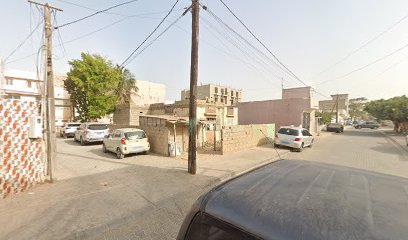
Restaurant Baye
Experience the vibrant flavors of Senegal at Restaurant Baye in Dakar, where local cuisine meets a lively bar atmosphere.
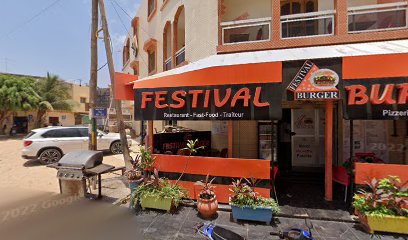
Local Phrases
-
- HelloSalaam aleikum
[sa-laam ah-lay-kum] - GoodbyeBa ci kanam
[ba chee ka-nam] - YesWaaw
[waw] - NoDéet
[deet] - Please/You're welcomeJërëjëf
[je-reh-jef] - Thank youJërëjëf
[je-reh-jef] - Excuse me/SorryNopp
[nopp] - How are you?Nanga def?
[nan-ga def] - Fine. And you?Mangui fi. Nopp naa?
[man-gwee fee. nopp nah] - Do you speak English?Ndax waxalaa angleex?
[n-dax wa-la angleex] - I don't understandDéedéet
[de-deet]
- HelloSalaam aleikum
-
- I'd like to see the menu, pleaseNopp, ma laaj menu bi
[nopp, ma laaj menu bee] - I don't eat meatDéet, ma nekk xarci
[deet, ma nek char-si] - Cheers!Bissimilah!
[bee-see-mi-lah] - I would like to pay, pleaseNopp, ma laaj tagg
[nopp, ma laaj tagg]
- I'd like to see the menu, pleaseNopp, ma laaj menu bi
-
- Help!Nangu!
[nan-goo] - Go away!Dafa wara!
[da-fa wa-ra] - Call the Police!Nopp, yow polis!
[nopp, yo polis] - Call a doctor!Nopp, yow dokteer!
[nopp, yo dok-teer] - I'm lostDéet, defar ma
[deet, de-far ma] - I'm illDéet, defar laa
[deet, de-far la]
- Help!Nangu!
-
- I'd like to buy...Nopp, ma laaj xar
[nopp, ma laaj char] - I'm just lookingDéet, ma begg na
[deet, ma begg nah] - How much is it?Nopp, à combien?
[nopp, ah com-bi-en] - That's too expensiveDéet, defal moo geuna
[deet, de-fal moh geu-na] - Can you lower the price?Nopp, ndax defal?
[nopp, n-dax de-fal]
- I'd like to buy...Nopp, ma laaj xar
-
- What time is it?Waxtu bi nga def?
[wak-too bee nga def] - It's one o'clockWaxtu waaw
[wak-too waw] - Half past (10)Njëbël (10)
[nje-bel (10)] - MorningSuba
[soo-ba] - AfternoonKër gi
[ker gee] - EveningJamm
[jam] - YesterdayNdey
[n-day] - TodayNopp
[nopp] - TomorrowNelaw
[ne-lau] - 1Benn
[ben] - 2Juj
[jooj] - 3Sët
[set] - 4Nëgg
[negg] - 5Juroom
[joo-room] - 6Juróom-benn
[joo-room-ben] - 7Juróom-juj
[joo-room-jooj] - 8Juróom-sët
[joo-room-set] - 9Juróom-nëgg
[joo-room-negg] - 10Fukk
[fook]
- What time is it?Waxtu bi nga def?
-
- Where's a/the...?Nopp, xët...
[nopp, khet] - What's the address?Nopp, nataal yi?
[nopp, na-taal yi] - Can you show me (on the map)?Nopp, la jàngal def?
[nopp, la jang-gal def] - When's the next (bus)?Nopp, yow ca kanam?
[nopp, yo ca ka-nam] - A ticket (to ....)Nopp, xët (ci ....)
[nopp, khet (chee)]
- Where's a/the...?Nopp, xët...
History of Hann Bel-Air
-
Hann Bel-Air, located along the coast of Dakar, has its origins as a fishing community. The area was initially inhabited by local fishermen who relied on the rich marine resources of the Atlantic Ocean. As Dakar grew in prominence during the 19th century, Hann Bel-Air began to experience an influx of people, transforming it into a more diverse and populated neighborhood.
-
During the French colonial period, particularly in the late 19th and early 20th centuries, Hann Bel-Air underwent significant changes. The French established infrastructure and urban planning initiatives, leading to the construction of roads and public buildings. This period marked the beginning of urbanization in the area, as it became more integrated into the expanding city of Dakar.
-
Hann Bel-Air has evolved into a vibrant cultural hub, reflecting the diverse ethnic groups that inhabit Dakar. The neighborhood is known for its rich blend of Wolof, Serer, and Lebou cultures. Traditional music, dance, and art are integral to the community's identity, with local events often showcasing the area’s cultural heritage.
-
Following Senegal's independence in 1960, Hann Bel-Air continued to grow, becoming a focal point for various socio-economic activities. The neighborhood attracted both local and international migrants seeking better opportunities. This led to a dynamic urban environment characterized by small businesses, markets, and community gatherings, all contributing to the area's economic vitality.
-
In recent years, Hann Bel-Air has faced challenges related to urbanization, including overcrowding and infrastructure strain. However, ongoing efforts by local government and community organizations aim to address these issues while preserving the neighborhood's cultural and historical significance. Initiatives to promote tourism and local artisans have also emerged, highlighting Hann Bel-Air’s unique identity within the broader context of Dakar.
Hann Bel-Air Essentials
-
Hann Bel-Air is accessible from various neighborhoods in Dakar via public transport. The most common way is to take a taxi or a ride-sharing service, which is convenient and relatively affordable. Alternatively, take a bus from downtown Dakar (Gare Routière) to Hann Bel-Air; buses 1 and 2 connect the area to the city center. If you're coming from the airport, a taxi ride will take approximately 30-45 minutes, depending on traffic.
-
Hann Bel-Air is best explored on foot or by bicycle, as many attractions are within walking distance. Local buses operate frequently; the major routes connect to central Dakar. Taxis and motorbike taxis (called 'jakartas') are readily available for longer distances. Biking is also an option, with some rental shops available in the area.
-
Hann Bel-Air is generally safe for tourists, but typical precautions should be taken. Avoid walking alone at night, especially in poorly lit areas. Certain parts of the neighborhood can be less secure, particularly near the coastline and isolated areas. It’s advisable to stay alert and keep personal belongings secure to prevent petty theft.
-
In case of an emergency, dial 15 for fire services, 17 for police, and 18 for medical assistance. There are local clinics and hospitals in Hann Bel-Air, with larger hospitals available in central Dakar. It is recommended to have travel insurance that covers emergencies. For minor health issues, pharmacies are accessible in the area.
-
Fashion: Do dress modestly, especially in local markets and religious sites. Avoid revealing clothing. Religion: Do respect local customs; when visiting mosques, women should cover their heads and men should wear long pants. Public Transport: Do give up your seat to the elderly and the disabled. Don’t eat or drink on public transportation. Greetings: Do greet locals with a friendly 'Bonjour' or 'Salaam.' A firm handshake is common. Eating & Drinking: Do try local dishes and accept food offerings. Don’t waste food or refuse hospitality, as it may be seen as disrespectful.
-
To experience Hann Bel-Air like a local, visit the local markets, such as the Marché de Hann, where you can find fresh produce and traditional crafts. Engage with vendors and locals to learn about their daily lives. Don't miss the coastal area, where you can enjoy the beach and local seafood restaurants. Joining a local fishing tour or participating in community events can also provide an authentic cultural experience.
Nearby Cities to Hann Bel-Air
-
Things To Do in Thiès
-
Things To Do in Mbour
-
Things To Do in Kaolack
-
Things To Do in Bakau
-
Things To Do in Serekunda
-
Things To Do in Serrekunda
-
Things To Do in Banjul
-
Things To Do in Lamin
-
Things To Do in Brikama
-
Things To Do in Saint-Louis
-
Things To Do in Gunjur
-
Things To Do in Farafenni
-
Things To Do in Soma
-
Things To Do in Janjanbureh
-
Things To Do in Canchungo

